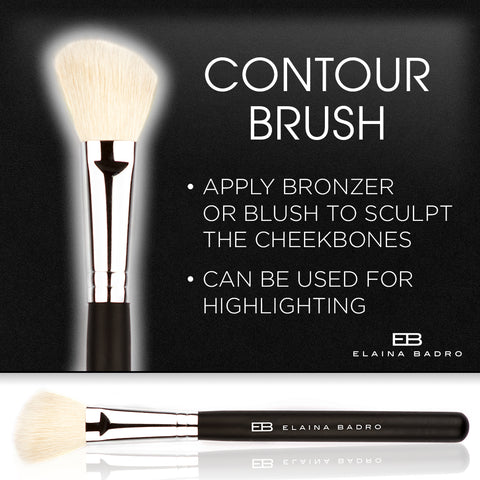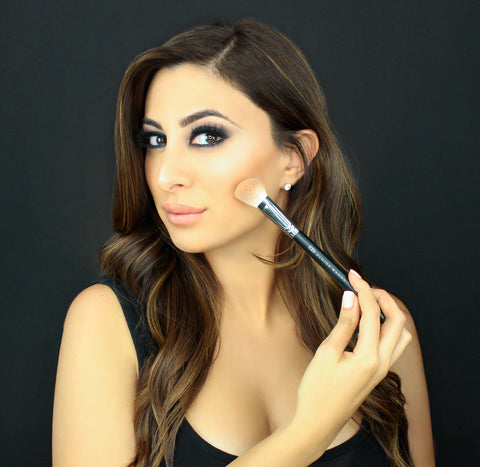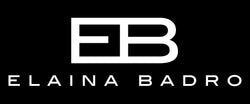Tue, Mar 26, 2024
How To Contour For Beginners (2024): Step by Step Guide
Introduction to face contouring
What is Contouring?Contouring is a makeup technique used to define and enhance the structure of the face by creating shadows. In recent years, we've seen more and more consumers contouring their own faces - where as before contouring was typically done on the runway and/or photoshoots by professional makeup artists only! It's quite interesting how we've seen the evolution of makeup play out right in front of our eyes through social media!
What Do You Need for Contouring?
In my years of experience, from a retail counter to celebrity makeup artist, and beauty entrepreneur of my own prestigious beauty brand - ecommerce store Elainabadro.com , I've learned and taught quite a few things about contouring! Many people don’t realize the importance of having the right beauty tools and products for contouring. To embark on your contouring journey, especially as a beginner in 2024, there are a few essential items you'll need to gather.

First and foremost, a high-quality contour makeup brush is key! These kits typically come with a range of shades to match your skin tone perfectly, ensuring a natural and seamless blend. Look for one that includes both matte and shimmer options to give you versatility in your contouring effects.
Next, makeup brushes play a pivotal role in the application process. Invest in a set of professional makeup brushes specifically designed for contouring. These should include a fluffy brush for blending, a tapered brush for precise application, and a small angled brush to sculpt those hard-to-reach areas like the sides of your nose or the hollows of your cheeks.
A highlighter is also crucial to achieve that radiant glow. Whether you prefer a powder, cream, or liquid formula, a highlighter will bring forward the areas you want to emphasize, such as the brow bones, cheekbones, and the bridge of your nose.
Lastly, don't forget about a good blending sponge. This tool is essential for softening and blending your contour, ensuring there are no harsh lines and everything looks seamlessly integrated with your skin.
As you gather these tools and products, remember that contouring can also enhance your natural beauty. With the right technique and quality makeup brushes from your trusted store, like Elainabadro.com, you can achieve professional, stunning results at home.
How to Contour - Step-by-Step Guide
-
Choose the Right Products:
Select a contour product that is matte and a few shades darker than your natural skin tone.
-
Prep Your Skin:
Start with a clean, moisturized face. Apply your foundation and concealer as usual before starting the contouring process.
-
Identify Areas to Contour:
The key areas to contour typically include the hollows of the cheeks, along the jawline, the sides of the nose, and the perimeter of the forehead.
-
Apply Contour:
Using a contour brush or a makeup sponge, apply the contour product to the areas you want to sculpt. For the hollows of the cheeks, start from the hairline near the top of the ear and blend the product downwards towards the corner of the mouth. Be sure to blend well to avoid harsh lines.
-
Blend:
Blend the contour product thoroughly using a makeup sponge or a blending brush to ensure a seamless and natural-looking finish. You can use tapping or sweeping motions to blend, depending on the area you're working on.
Bonus Tip
Set with Powder (Optional):
If desired, set your contour and highlight with a translucent powder to help it last longer and prevent it from smudging or fading throughout the day.
Determine your face shape
Understanding your face shape is the cornerstone of mastering contouring, acting as a roadmap for where to place your shadows and highlights. Over the years, as both a celebrity makeup artist and a curator of quality makeup tools at Elainabadro.com, I've observed the transformative power of personalized contouring. Each face shape has its unique characteristics and requires a tailored approach to contouring to accentuate its beauty.
Round Face Shape:
If your face width and length are roughly the same, with softer angles, you likely have a round face. The goal is to elongate and define by applying contour shades to the temples and the sides of your forehead and cheeks. Highlight the center of your forehead, under your eyes, and your chin to bring these areas forward.
Square Face Shape:
Characterized by strong, angular jawlines and an approximately equal face width and length, square faces benefit from contouring that softens these angles. Apply contouring along the jawline and the edges of your face, blending towards your hairline. Highlight the middle of your forehead and chin to enhance the face's natural dimensions.
Rectangle Face Shape:
With a face longer than it is wide and strong angles, the rectangle face shape shines with contouring that creates an illusion of a shorter face. This is achieved by applying contour on the top and bottom of your forehead and below the jawline, blending carefully. Highlighting the center of the face adds width, balancing out the length.
Heart Face Shape:
A heart-shaped face features a wider forehead and a narrow chin. Contour under your cheekbones, starting from the ears to the middle of your cheeks, and lightly around the sides of your forehead to balance the width. Highlight the center of your forehead, under the eyes, and the chin to draw attention to the center and lower parts of the face, creating a harmonious balance.
Identifying your own face shape involves examining the widest part of your face, the jawline's shape, and the face length. Once recognized, you can employ these contouring techniques to elevate your natural structure. Remember, the goal of contouring is not to alter, but to accentuate your inherent beauty, using it as a powerful tool to highlight your best features. As we embrace diverse beauty at Elainabadro.com, we encourage you to explore these techniques and find joy in the art of makeup.
Prep your skin
Prepping your skin before delving into the art of makeup, especially contouring, is like preparing a canvas before painting; it's essential for achieving the best possible outcome. Throughout my career in the beauty industry, including my time as a celebrity makeup artist I've consistently emphasized the significance of a thorough skincare routine prior to makeup application. The steps of cleansing, toning, and moisturizing not only ensure your skin is clean and free from impurities but also balance and hydrate your skin, providing a smooth and even surface for makeup application.
Cleansing helps to remove any oils, dirt, and residue from your face, ensuring a clean slate. Following up with a toner can help restore your skin's pH balance, refine pores, and prepare your skin for the moisturizing step, which hydrates and softens the skin, preventing any makeup from clinging to dry patches or lines.
The application of a primer is the final, crucial step in skin preparation. Primers are designed to smooth out the skin's texture, fill in pores and fine lines, and create a grippy base for your makeup to adhere to, which not only enhances the appearance of your makeup but also significantly extends its longevity. Whether you're aiming for a natural look or a full contouring routine, a primer ensures your makeup applies evenly and stays put, allowing you to maintain a flawless finish throughout the day.
Remember, the effort you put into prepping your skin will reflect in your makeup application. By treating your skin with care and ensuring it's well-prepped, you set the stage for a beautiful, radiant finish that not only looks good but also feels healthy and nurtured.
Takeaways

Mastering the art of contouring begins with understanding the essential tools and products needed: a high-quality contour kit, professional makeup brushes designed for contouring, a radiant highlighter, and a good blending sponge. Recognizing your face shape—be it round, square, rectangle, or heart—is key to applying contouring techniques that accentuate your natural beauty. Each face shape has its own contouring strategy to enhance its unique features.
Prepping your skin is foundational to achieving the best makeup application. A thorough skincare routine - cleansing, toning, and moisturizing - coupled with the application of a primer, creates a smooth, even canvas that not only allows makeup to apply more beautifully but also ensures its longevity throughout the day.
These takeaways distill years of experience in the beauty industry, emphasizing that the right tools, techniques, and preparation are pivotal to elevating your makeup game, especially for beginners venturing into the world of contouring in 2024.
Remember, practice makes perfect with contouring, so don't be afraid to experiment and find the techniques and products that work best for your face shape and skin tone.





Leave a comment